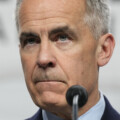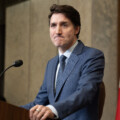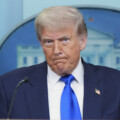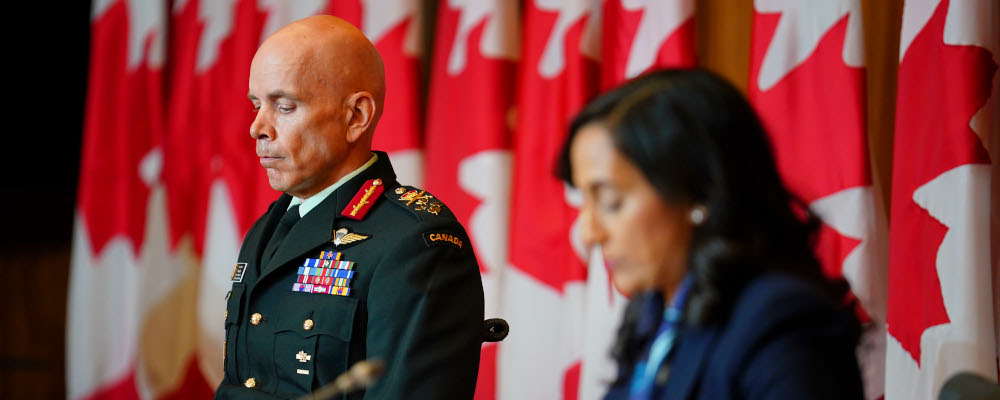Every year on Remembrance Day, Veterans Affairs Canada releases a video reminding Canadians about the people the day is intended to commemorate. Most notably, the images intend to humanize them, often portraying them as everyday Canadians—who could be family members, friends, and the like. Certainly, that was true during the two world wars, when citizens were mass-mobilized to fight the Axis. The reality of the Canadian Armed Forces (CAF) today is much more complex, and misperceptions surrounding it have had real consequences on its current state.
The CAF plays a unique role within Canadian society, as one of the primary instruments by which the government employs violence in defence of the country, which requires the military to maintain a culture dedicated to ensuring its personnel are able to carry out their roles reliably under difficult conditions. To this end, soldiers are indoctrinated according to long-held traditions and codes that lionize valour, duty, and sacrifice.
The CAF’s culture is a critical glue that holds the force together in extremely difficult operations. Yet its soldiers must be agile, intellectually and technologically, to defend the country from foreign threats and provide support to domestic civil authorities. It must also reflect the values of broader society; otherwise, the population will not support its operations, nor will people join as recruits. Navigating between these two poles is essential for the CAF’s survival.
The uniqueness of the CAF extends beyond just the culture of the rank and file—its entire institutional existence is unlike any other organization in Canada: in law, the chief of the defence staff (CDS) position derives his line of authority from the monarch, though convention subordinates the position to the minister of national defence. This however has contributed to the situation the CAF finds itself in today, and why a new model for civil-military relations may be required.
The current model of civil-military relations emerged as a result of the challenge of managing the CAF after the Second World War. For much of that time, the dynamic of that debate has been resources: allocating enough for peacetime administration versus preparing for wartime operations. The needs of the latter, as the Second World War demonstrated, required major economic mobilization and dislocation. Preparing for that end required the maintenance of a structure to do so, which was a costly enterprise.
The drive for “administrative efficiency” enabled one of the most consequential reforms: the Unification of the CAF during the 1960s, which eliminated the separate services (the army, navy, and air force) and amalgamated them into a single service structure. This approach was largely based on trying to consolidate duplicated functions into a single organization to find cost savings, but it destroyed morale. It also illustrates a dynamic that continues to this day, with attempts to reform aspects of the military culture from the outside tending to go poorly and resulting in severe consequences for morale and retention.
Not immediately obvious, but a key part of this debate, was the relationship between the civilian and military leadership. The effort to increase efficiencies resulted in a consistent effort to elevate civilians into roles previously held by military members, curtailing the authority of senior military staffs. A 1980 study of Unification’s effects on the military noted how “civilian standards and values… are increasingly being used to assess Forces’ needs and goals, because we no longer have clearly defined and defensible military values.” It went on to say there “was urgent need to address this problem squarely.” Instead, the trend largely continued for the next 40 years.
The height of this occurred in the 1990s, which was marked by the “defence team,” where civilian officials were often involved in military decision-making. Even though that practice was officially discontinued in the early 2000s, the influence of civilians is felt across the department and the military each day, often making decisions on the day-to-day lives of military personnel. Although all decisions likely require some level of civilian input, the balance of civilian considerations over military ones is skewed. This often manifests in policies that add excessive bureaucratic requirements on troops, or does not address their needs, or are slow to react.
In addition, the CAF has been affected by a growing shift within the bureaucracy that limits its independence and authority to implement decisions. This was not unique to the military, but one that was evident across all departments. The civilian bureaucracy, once prized for its independence and ability to speak truth to power, has slowly become reticent, instead being focused on defending the government of the day. This has emerged during major scandals like SNC-Lavalin, We Charity, and the like, where public servants are frequently seen to bend professional ethics to support the prerogatives of the government of the day.
While the CAF resisted these pressures better than other departments, it too has succumbed to this pressure. One study published a decade ago found that senior military personnel felt dissuaded from offering frank advice to the government that contradicted the latter’s established political decisions. Moreover, the CAF’s ability to communicate with the public has been curtailed, especially following the imposition of “message control” during the Afghanistan mission under the Harper government. This has contributed to the situation where the basics of defence and military policy and strategy are non-existent among the wider populace and leaves the service vulnerable to criticism over its policies, as its side is unable or unwilling to address incorrect claims in a timely and factual manner.
While the embarrassing state of the CAF today has many different sources, the impact of civil-military relations cannot be ignored. The last several decades have led to the present moment, where the CAF is suffering massive retention issues, ageing and increasingly decrepit capabilities, and problems with its institutional culture.
Realigning the balance in civilian control within the department is key. One option would be to reinvest some authority back into the military to identify solutions and implement decisions. The current model robs authority and accountability from the military—which results in paralysis and avoidance of difficult decisions. Reversing that trend would allow for greater accountability and improve policy outcomes as there would be better buy-in from the rank-and-file personnel.
Improving the capacity of the military to manage its affairs should not compromise civil control, especially if it results in superior outcomes that are in line with the government’s broader interests. Furthermore, providing military officials greater independence and freedom to speak may also improve outcomes.
Several weeks ago, the CDS, General Wayne Eyre, delivered an honest assessment of the state of the CAF and signalled its inability to deploy forces. This is a good first step—by clearly communicating the military’s perilous state, he limited the government’s available options. This brought some much-needed skepticism to the prime minister’s call for a potential military intervention to Haiti a few weeks later. While that might be out of sync with the political intent, it prevented the government from implementing an unsustainable military operation.
Considering the state of the armed forces, it is clear that the current model of relations has contributed to its decline. If the government is serious about improving the state, addressing it must be one of its first tasks.
Recommended for You

The Notebook by Theo Argitis: Mark Carney’s first major tests

The Weekly Wrap: Trudeau left Canada in terrible fiscal shape—and now Carney’s on clean-up duty

‘Another round of trying to pull capital from Canada’: The Roundtable on Trump’s latest tariff salvo

‘We knew something was coming’: Joseph Steinberg on how Trump is ramping up his latest tariff threats against Canada




